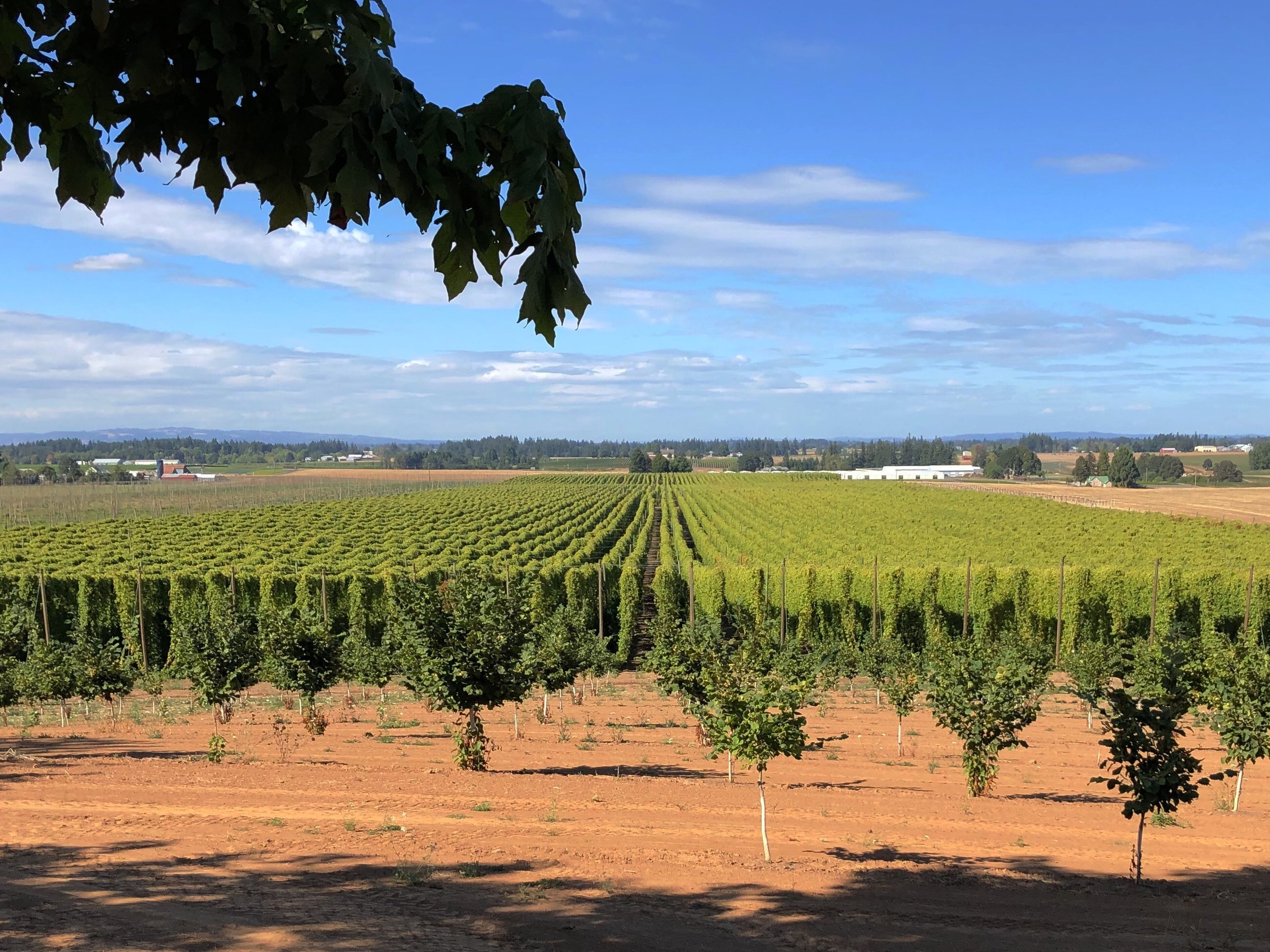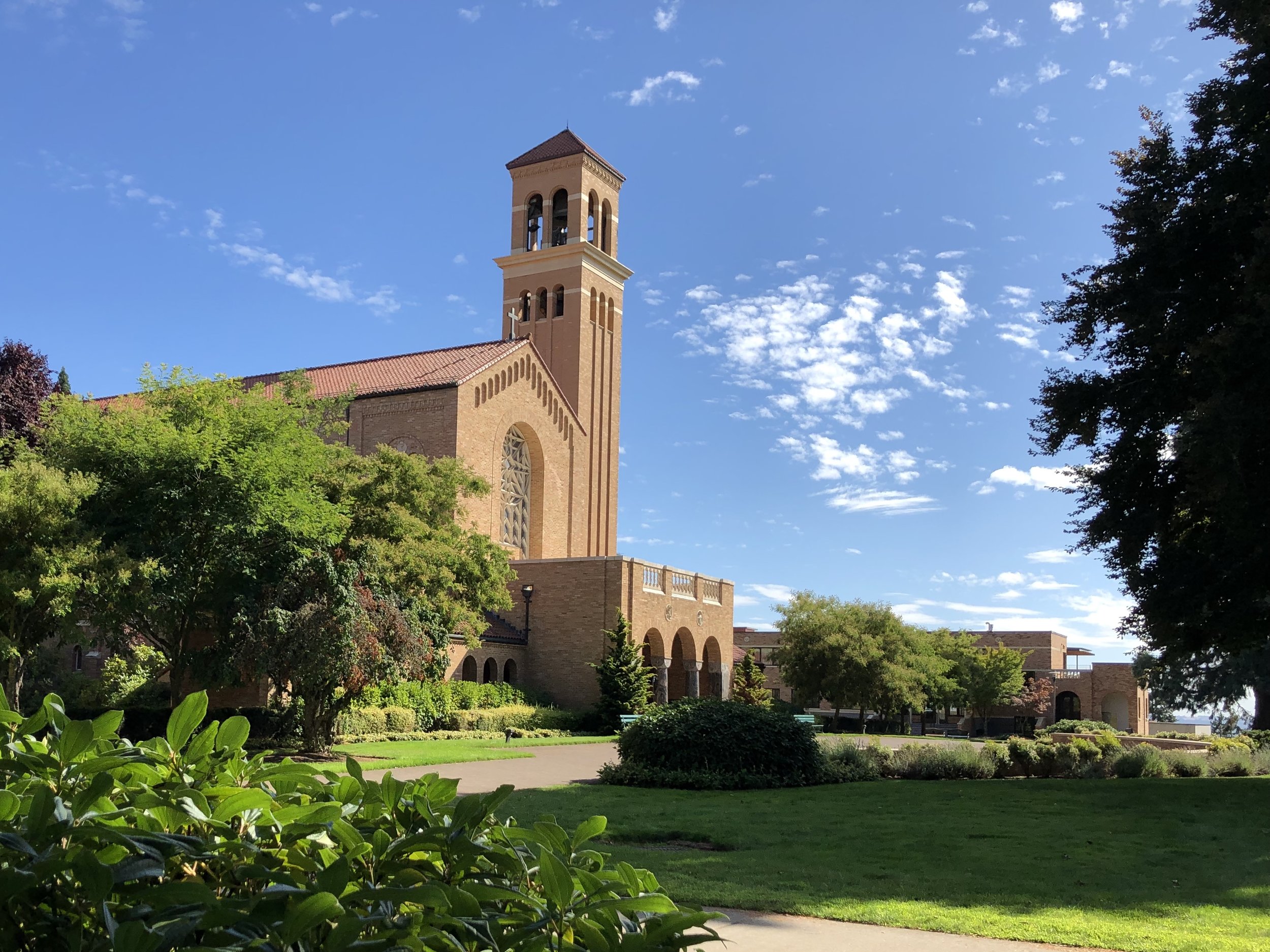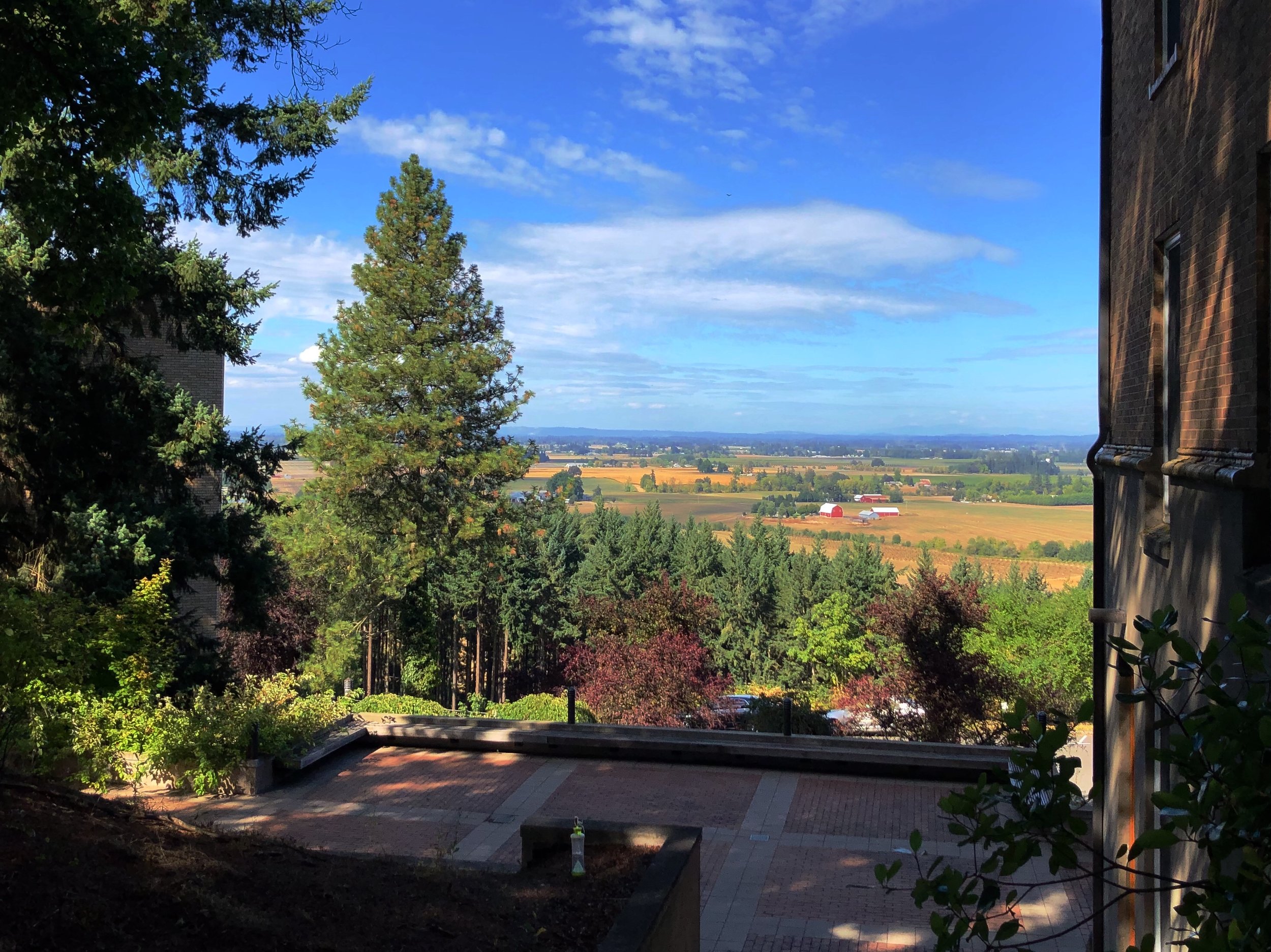Benedictine Brewery Is Quickly Becoming a Gem
Over the weekend, the Benedictine Brewery celebrated its tasting room’s one-year anniversary. The brewery is a project of the Benedictine monks of Mount Angel Abbey, a monastery and seminary founded about an hour south of Portland in the 1880s. Led by Father Martin Grassel, the monks built a five-barrel brewhouse at the edge of the hop fields they own (but which are tended by Coleman farms). The brewhouse is a timber-frame structure with a gracious tasting room looking out over the trellises.
Monastic brewing has become more common, which has drained a bit of its mystique. Benedictine Brewery, however, is unusual. I don’t know any monastic brewing in which the monks do so much. Father Martin designs the beers and heads brewing, and monks help support the operation—as do avid volunteers, who seem to marvel at the whole thing. On Saturday, two brothers grilled up lunch while a couple others helped serve customers. Father Martin was in the brewhouse working. There aren’t always this many monks involved, but it’s also common to see them there. When people think of monastic brewing, they imagine monks bustling around the breweries, but that’s far from typical. Orval is several orders of magnitude more famous, but you won’t find any monks in the brewery if you visit.
The hops also make the whole thing that much more remarkable. They’ve been there for decades, part of the monastery grounds—just as hop fields would have been on monasteries in Belgium and Germany 500 years ago. That, too, is quite unusual. But the town of Mt. Angel is in the heart of Oregon’s hops-growing region, and depending on which approach you take, you’ve already driven by a couple fields on the way to the monastery. By a happy coincidence, harvest was underway on Saturday, so visitors could get a pint of St. Michael and watch the top-cutter crawl through the field snipping down bines.
Father Martin is self-taught, though he has received support from several commercial breweries, as well as OSU’s brewing program. His beers have not yet become world standards—that would be a tall order for a year-old brewery—but he’s a natural brewer. None of his beers is worse that good, and a couple are excellent. Not surprisingly, the initial pair of beers, Black Habit and St. Benedict, are the most accomplished. They’ve been through the most iterations on this system and those of collaborating breweries, and they bear the evidence of refinement. Black Habit is a dark Belgian ale, rich and creamy, while St Benedict is a very light farmhouse ale. The latter beer was the best version I’ve had yet—yeasty and malty, but also wonderfully crisp and thirst-slaking.
I’m always surprised to learn how few beer fans have visited. Especially during the summer, as the hops work their way up the trellis, it’s a magical place. And given how hands-on the monks are, it’s one of the truly rare places on the entire planet, what to speak of the US. You’ll drive a good long wy before finding anything like it. If you’ve been looking for an excuse, the town of Mt. Angel hosts their annual Oktoberfest in a couple weeks, and the abbey will be pouring beers up the hill.
In the meantime, here are some photos from Saturday to inspire you to get down there. This first batch are of the brewery. The brewery building sits next to a big, white barn, which is the landmark to look for as you arrive. One of these photos shows the view of the fields from the brewery (the naked trellises); the hop field with hops is around a bend in the road—but they’re also owned by the monastery.




This next batch are shots from the monastery further up the hill. The monks not only allow you to visit, but actively encourage it. Part of the reason they built a monastery was to attract people to the abbey. It’s a gracious space with views of the vast, fertile valley below, and if you do visit, definitely worth taking an hour to see.



